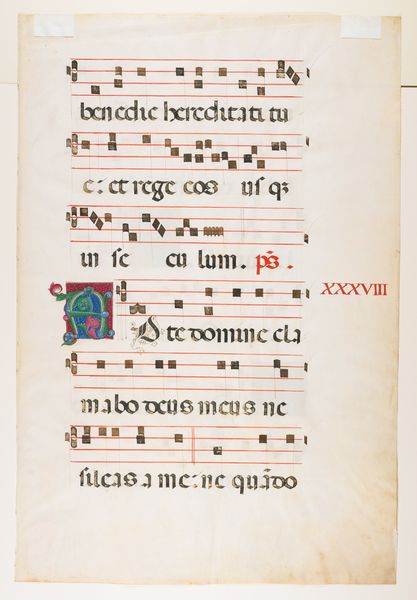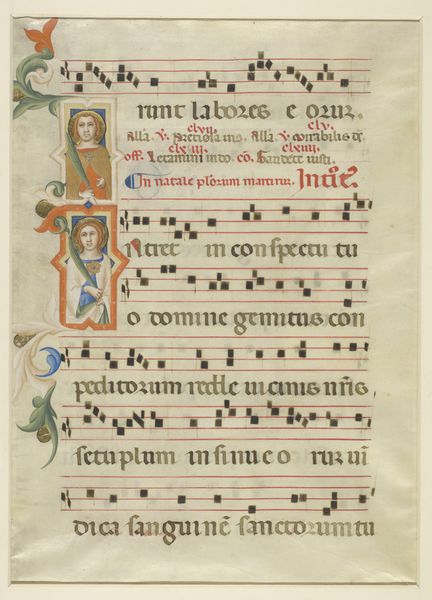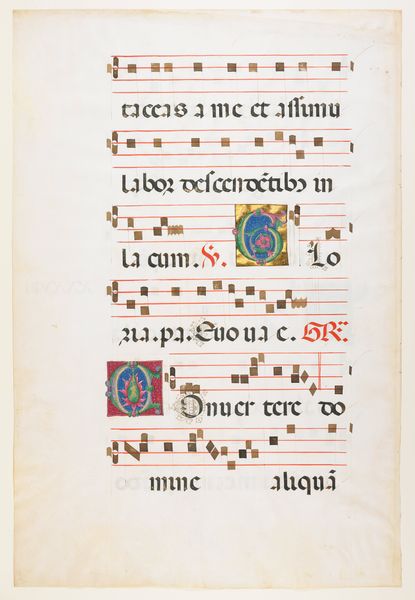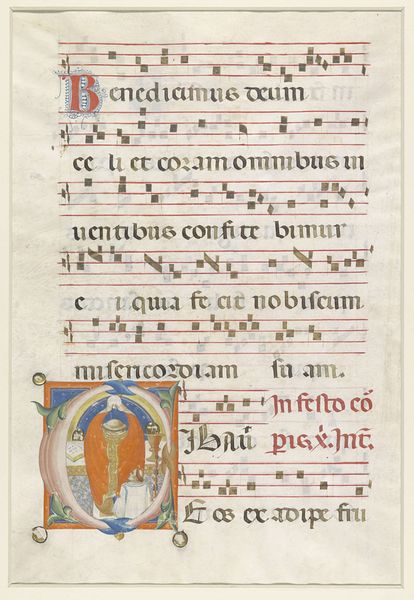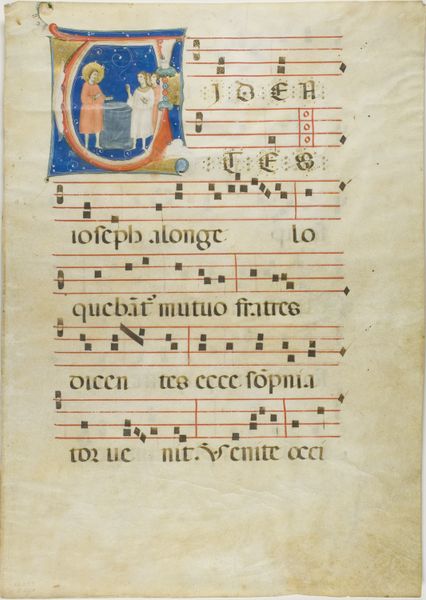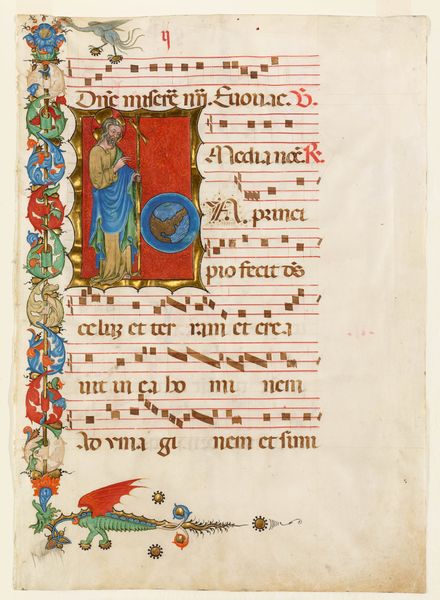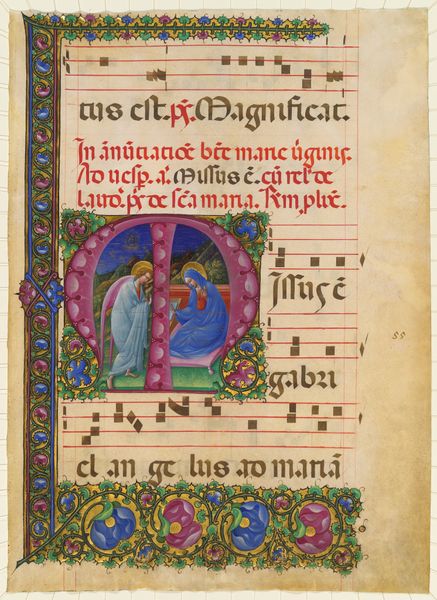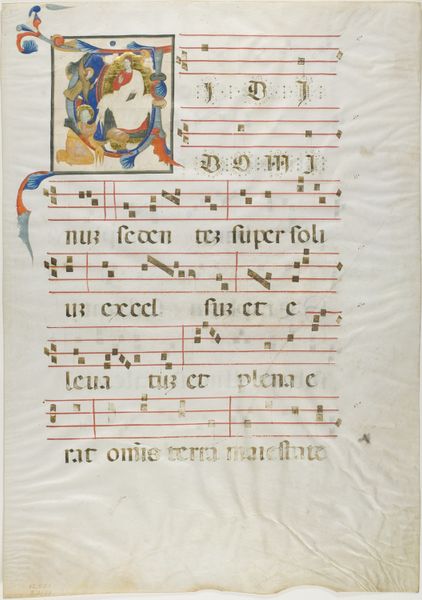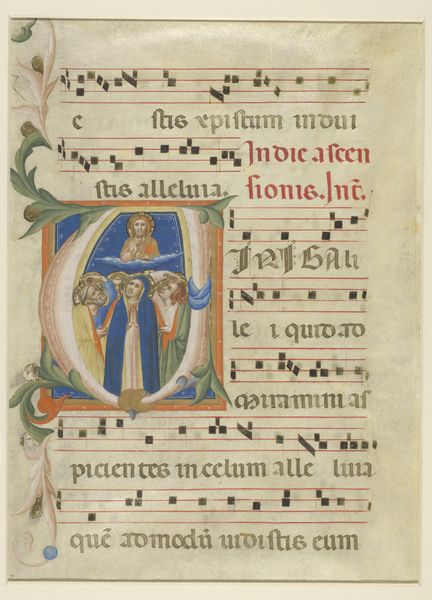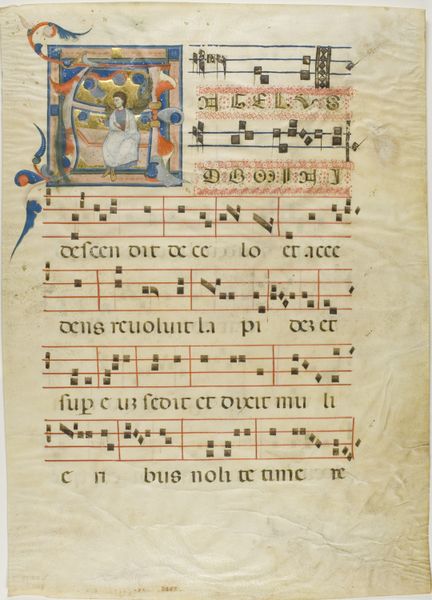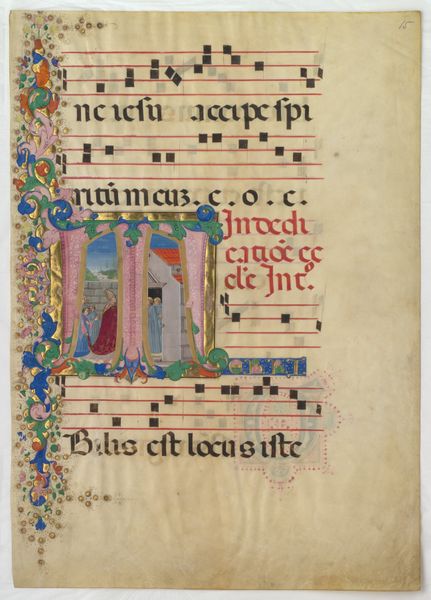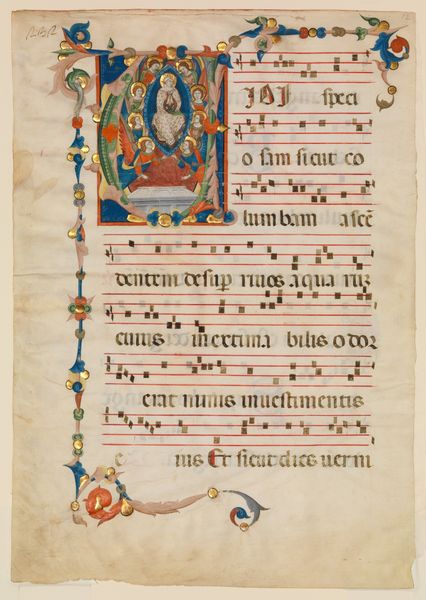
Manuscript Leaf with a female saint (possibly Dorothy) in an Initial G, from a Gradual 1330 - 1340
0:00
0:00
coloured-pencil, paper, ink
#
coloured-pencil
#
medieval
#
paper
#
ink
#
coloured pencil
#
men
#
italian-renaissance
#
italy
#
medieval-art
#
miniature
Dimensions: Overall: 18 3/4 x 13 5/8 in. (47.7 x 34.6 cm) Illumination: 2 1/4 x 2 1/4 in. (5.7 x 5.7 cm) Study mat size: 21 7/8 x 16 in. (55.6 x 40.6 cm)
Copyright: Public Domain
Editor: Here we have a manuscript leaf from a Gradual, likely dating from 1330 to 1340. It's attributed to "the Illustratore" and resides at the Metropolitan Museum of Art. The materials listed include ink and coloured pencil on paper, showcasing a female saint, possibly Dorothy, within an initial 'G'. What strikes me is the contrast between the rigid musical notation and the swirling, almost organic, embellishments around the edges. What do you see in this piece? Curator: What immediately grabs my attention is how this leaf encapsulates the power dynamics of the medieval period. We often perceive illuminated manuscripts as purely devotional objects, but they also served to reinforce hierarchies. Notice how the female saint, possibly Dorothy, is literally framed and contained within the letter "G," subtly mirroring the constraints placed upon women within religious and secular structures. Consider, too, the use of gold leaf – a material signifying wealth and divine authority. How does the positioning of musical notation in relation to the illuminated imagery further this understanding? Editor: That's a fascinating point. The music, in a sense, dictates the framework, setting the parameters around which even a saint must exist. It is as though the music legitimizes and re-affirms this hierarchical vision, controlling the spiritual expression through art. So this artistic work normalizes and affirms particular social configurations, political circumstances, or other existing values. Curator: Precisely. The presence of musical notation elevates the symbolic weight, suggesting a pre-existing authority in shaping the overall perspective. It makes us question the very purpose of these objects - Are they only artworks or carefully crafted instruments for reinforcing socio-political norms? Editor: Thank you! It makes me think differently about how art participates in and shapes our perceptions of social and political constructs of the past and present. Curator: Indeed. Viewing artworks through the lens of power and social context truly unlocks new levels of understanding and critical thinking.
Comments
No comments
Be the first to comment and join the conversation on the ultimate creative platform.
